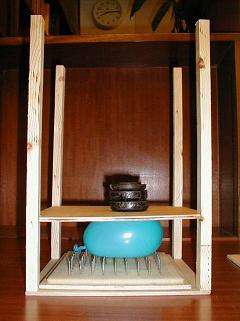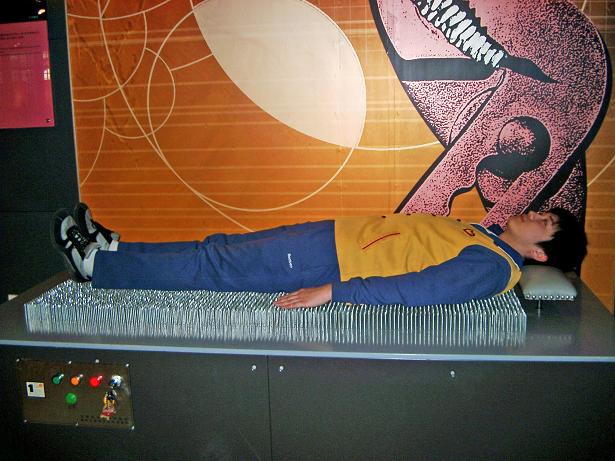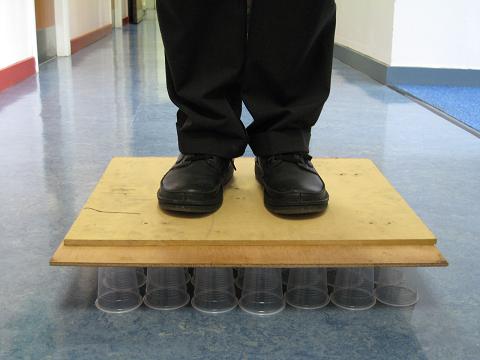Balloons on nails
This demonstration shows the effect of stress distribution.


Fig. 6-1: Balloon on nails
Place a balloon on a single nail and hold a thin wooden plate above the balloon and position the balloon as shown in Fig. 6-1a. Gradually transfer the weight of the plate onto the balloon. Before the full weight of the plate rests on the balloon, it will burst. This happens because the balloon is in contact with the very small area of the single nail, resulting in very high stress and causing the balloon to burst.
Now place another balloon on a bed of nails instead of a single nail. Put the thin wooden plate on the balloon and add weights gradually onto the plate as shown in Fig. 6-1b. It will be seen that the balloon can carry a significant weight before it bursts. It is observed that the shape of the balloon changes but it does not burst. Due to its changed shape, the balloon and hence the weight on the balloon are supported by many nails. As the load is distributed over many nails the stress level caused is not high enough to cause the balloon to burst.

Fig. 6-2: A person lying on a nail bed
A similar example was observed at a science museum as shown in Fig. 6-2. A 6000-nail bed is controlled electronically allowing the nails to move up and down. When the nails move down below the smooth surface of the bed, a young person lies on the bed. Then the 6000 nails move up slowly and uniformly and lift the human body to the position shown in Fig. 6-2. If the body has a total uniform mass of 80kg and about two third of the nails support the body, each loaded nail only carries a force of 0.2 N or a mass of 20 grams. Thus the person is not hurt by the nails.


Fig. 6-3: Uniform force distribution
A similar but simpler demonstration can be conducted following the observation of the nail beds. Fig. 6-3a shows 49 plastic cups which are placed upside down and side by side. Place two thin wooden boards on them and invite a person to stand on the boards. The boards spread the weight of the person, 650 N, over the 49 cups, each cup carrying about 13 N, which is less than the 19 N capacity of a cup.
